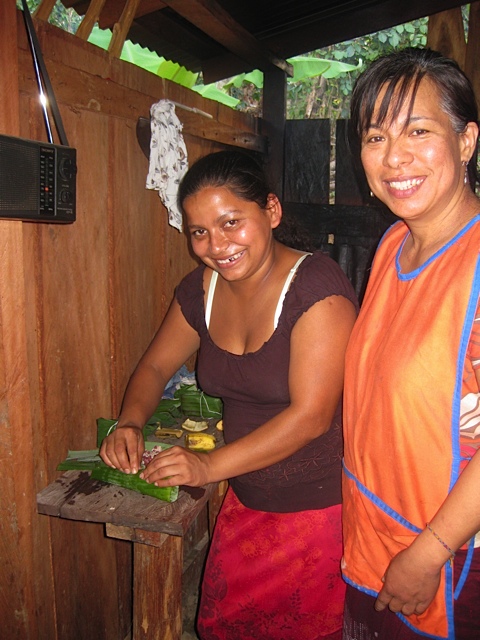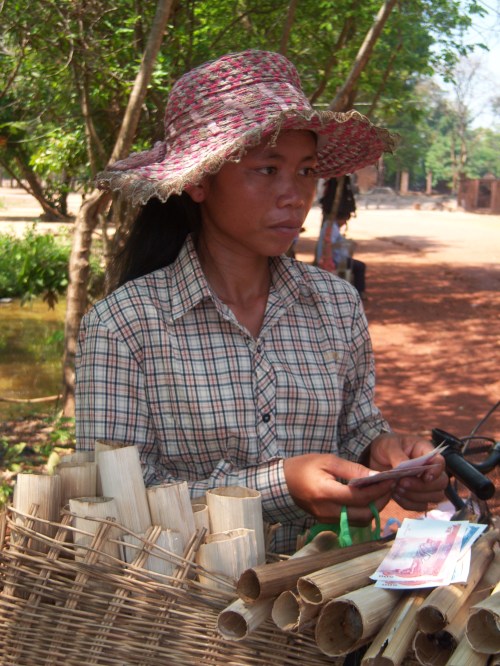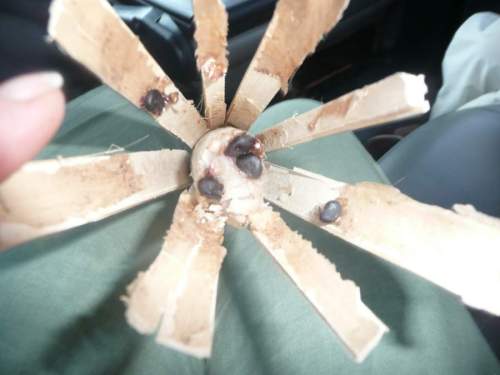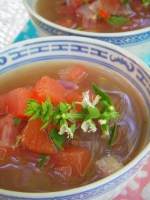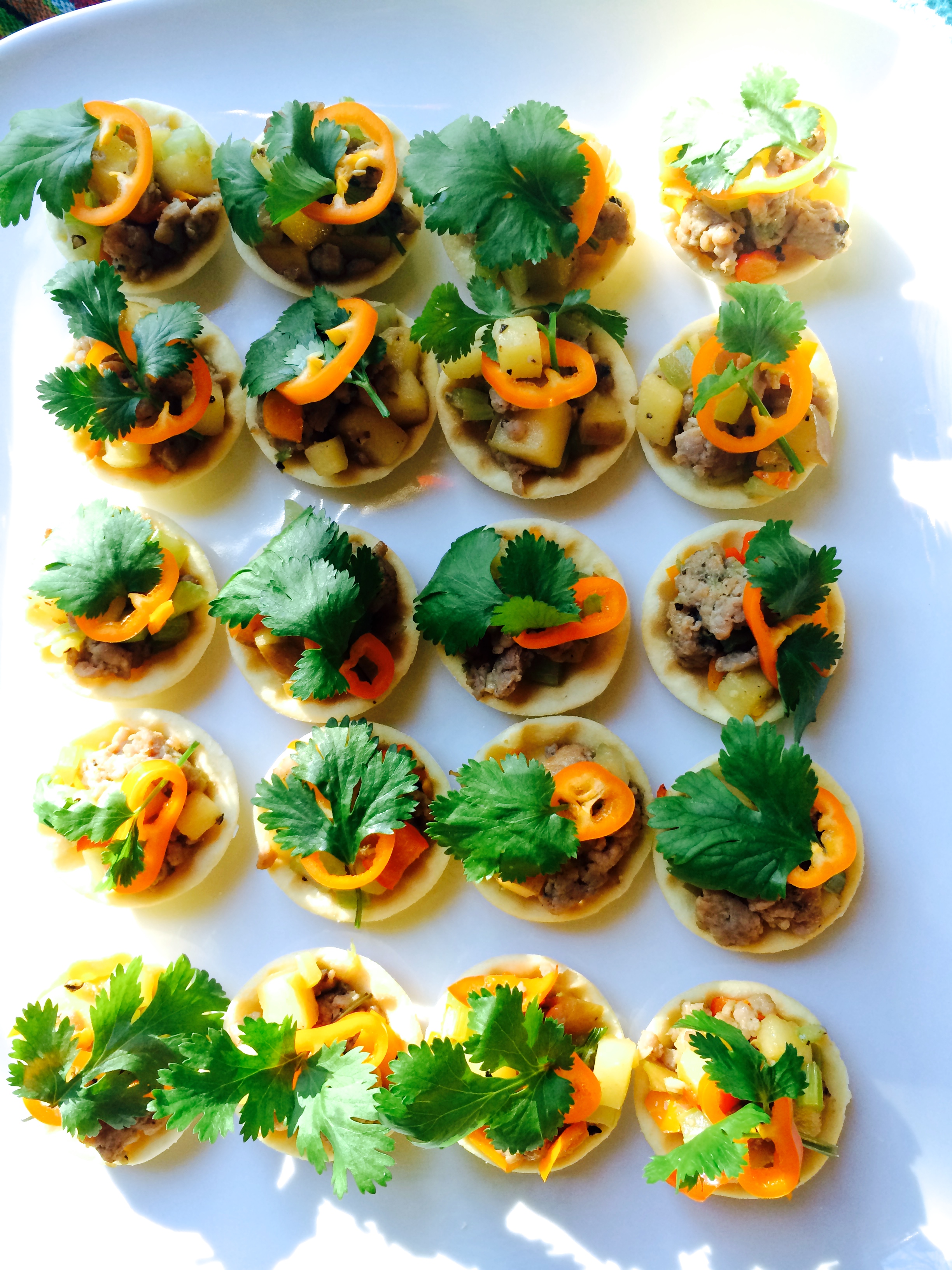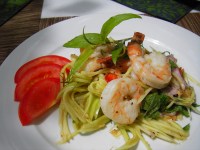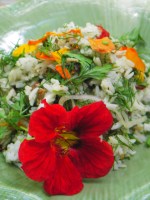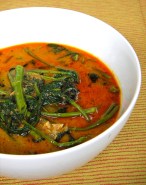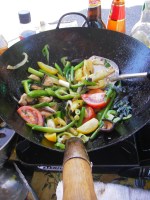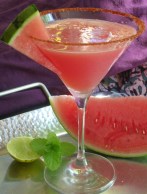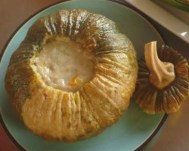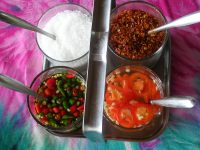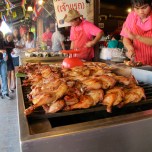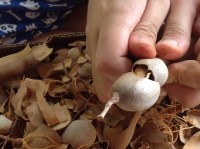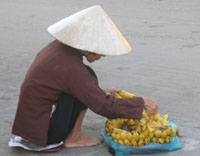Heavenly Dessert
When I was young I could not resist eating Khanom Mo Gang – ขนมหม้อแกงถั่ว – Thai Coconut Custard with Mung Beans. One small parcel in a banana leaf was not enough for my hungry soul.
In Thai cuisine there are many kinds of Mo Gang Thai custard but two types dominate: one with egg, palm sugar and coconut milk, and another that includes cooked split mung beans or cooked taro. What makes this Thai custard so special is the coconut milk and fried shallot oil. These two ingredients set Thai Mo Gang apart from other custards.
One event that I have never forgotten was when my aunt purchased a little parcel of Mo Gaeng for everyone for breakfast and my brothers and sister woke to discover that their shares were gone. They have long ago forgiven me and forgotten this, but I still have lingering memories of the taste and my mischief.
Thai Coconut Custard with Mung Beans
In Thailand an individual serving of this Thai dessert is wrapped in a banana leaf and secured with a little wood stick like a toothpick.
Thais commonly open up the little parcel and use a small spoon to leisurely take one small bite at a time. The banana leaf is not only used as a wrapper, but as a disposable plate as well.
Step-by-Step: How to Make Thai Coconut Custard with Mung Beans
The first step is to steam split mung beans ahead of time using Pranee’s Step-by Step instructions from an earlier post for preparing Steamed Peeled Split Mung Beans. The second step is to make fried shallots and shallot oil following the recipe on this youTube video: https://youtu.be/5LTCo3SRWLk. Then the rest of the preparation is very simple.
Prepare the steamed split mung beans and fried shallot ahead of time and the rest is simple.
Place sugar, eggs, salt and Pandan leaf in a medium size bowl. Using a whisk or an egg beater, whip until foamy and the sugar and salt are dissolved, about 1 minute. Stir in coconut cream and repeat the mixing process until well blended, about 30 seconds. Run the egg and sugar mixture through a sieve into food processor, removing the Pandan leaf. Add steamed mung beans to the food processor or blender and blend until smooth, about 1 minute.
Heat the mixture in a deep pan over medium heat. Add 1/2 portion of fried shallots and all of the shallot oil and stir constantly until the texture changes to a thick soup, about 5 minutes.
Pour the thick batter into a greased 8″ by 8″ baking pan. Sprinkle the remaining half of the fried shallots on the top (see picture below) before baking.
Bake at 375°F in a preheated oven until the top is golden and the edge of the custard pulls away from the edge a little, about 45 minutes.

Thai Coconut Custard with Mung Beans – ขนมหม้อแกงถั่ว
Thai Coconut Custard with Mung Beans
Khanom Mo Gaeng
ขนมหม้อแกงถั่ว
Serves 8 to 16
Preparation time: 20 minutes
Baking Time: 45 minutes
3 tablespoons canola oil
2 shallots, peeled and sliced
1 1/2 cups evaporated cane sugar
6 eggs, duck eggs preferred
1/4 teaspoon salt
1 Pandan leaf
1 1/2 cups coconut cream
2 cups steamed mung beans
Heat a small skillet over medium heat and stir in canola oil and shallots. Stir back and forth until the shallots are golden brown. Using a slotted spoon, remove fried shallots and divided into two portion, and let them cool. Save the oil for later.
Place sugar, eggs, salt and Pandan leaf in a medium-size bowl, and using a hand whisk or egg beater, beat until foamy and sugar and salt are dissolved, about 1 minute. Then stir in coconut cream, and repeat the mixing process until well blended, about 30 seconds. Strain into food processor to remove Pandan leaf. Add steamed mung beans to the food processor or blender and blend until smooth, about 1 minute.
Heat the mixture in a deep pan over medium heat. Add 1/2 portion of fried shallots and all of the shallot oil into the pan. Stir constantly until the texture changes to a thick soup, about 5 minutes.
Pour the thick batter into a greased 8″ by 8″ baking pan. Sprinkle 1/2 portion of fried shallots on surface (see picture above) before baking. Bake at 375°F in a preheated oven until the top is golden and the edge of the custard begins to pull away from the sides of the pan, about 45 minutes.
© 2015 Pranee Khruasanit Halvorsen
I Love Thai cooking Pranee teaches Thai Cooking classes in the Seattle area. Her website is: I Love Thai cooking.com Related Links: How to Cook Peeled Split Mung Bean (praneesthaikitchen.com) Mung Bean (wikipedia) Fried Shallots (https://youtu.be/5LTCo3SRWLk)



































